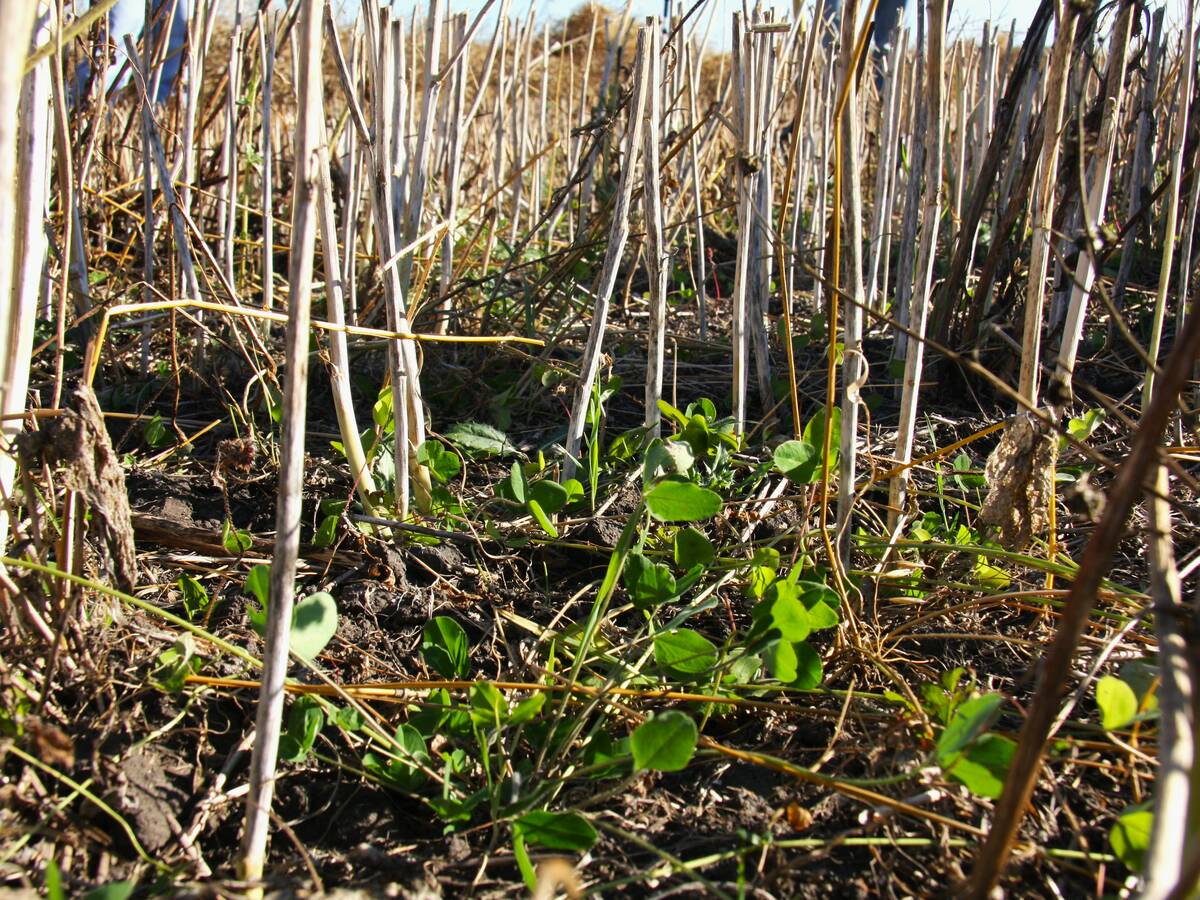EDMONTON — Farmers are advised to invest in the big stuff first and then selectively target the tiny.
An agronomist with Crop Production Services in Calgary says they can sometimes focus too much time and money dealing with their fields’ smallest problems.
Norm Flore told the recent FarmTech show in Edmonton that producers should examine all their field inputs carefully, especially as margins decline.
The ratio between invested dollars and yield need to be a top priority, he added.
“Ask yourself, are you doing all of the things that will get you the most bang for your buck?” he said.
Read Also

Saskatchewan project sees intercrop, cover crop benefit
An Indigenous-led Living Lab has been researching regenerative techniques is encouraging producers to consider incorporating intercrops and cover crops with their rotations.
“There are no certainties with farm inputs. Not all of your investments pay off equally from year to year.”
Flore said macronutrients and fungicides are the top earners for producers.
He cited decades of regional research showing that adequate nitrogen to grow a crop is one of the single largest limiting factors that farmers can control.
“Have you obtained the best genetics you can? If you have, then what have you done to protect them?” said Flore.
Seed treatments have been shown to increase plant stands and improve the uniform development of most crops, which Flore said is an investment that will show up in yields later on.
He said it’s also important to make sure that seeding equipment plants crops evenly and at the right depth.
Stabilized nitrogen products could be a good investment for producers who are applying large amounts of nitrogen in a single pass. However, they deliver less of a benefit for those who band in an initial pass in the fall or place urea safely away from their seed.
“If you have a need that those products can meet, then they really deliver,” he said.
Flore said if producers can identify a seed safety issue or “if you feel you are losing N between application and plant use, then you can quantify that loss and decide if the investment is worth it.”
He said prairie producers might benefit from those products in 10 to 20 percent of their acres.
“Under the right circumstances, there is an 80 percent chance of this bet paying off,” he said.
“It’s like recommending snow tires for every car in the world. In many places, it will do nothing but cost money. In Canada it is a good investment. Target your field investments.”
He said broadcasting nitrogen is becoming more popular for prairie farmers who have large acreages to cover in a short season.
“But banding will keep losses to a minimum. You have to decide what will work best on your farm.”
Phosphorus also pays off, but most producers who applied sufficient amounts to replace what their crops have been removing could get by with cutting the nutrient for a year or two.
Rates as low as 10 to 15 pounds per acre will still give plants enough nutrients to encourage rapid growth and a slightly shorter time to maturity.
Beyond that, he said, there will be no advantage in the year of application unless the soil is deficient.
“You will need to make that investment at some point in the future, and it will be a larger one if you fail to put it in now, but there is a choice,” he said.
Unless the field’s history isn’t known or it has just come out of a forage rotation, a 60 bushel wheat or 50 bu. canola crop will remove 35 lb. of phosphorus, which means growers who cut rates would have to put that back within a season or two.
Flore said phosphate enhancers such as penicillium bilaii will help make additional phosphate available, but will it be enough of a benefit in any given season?
He said the product would not likely produce a good return on investment in most cases.
He said his research at Vulcan, Alta., last year and research at the Indian Head Agricultural Research Foundation at Indian Head, Sask., showed little or no response to applying micronutrients to fertilizer prills.
He said producers need to identify a shortage of a micronutrient before committing an entire farm or field to the product.
Farmers should start by conducting strip trials in their own fields, he added. Seed and fertilizer applied micronutrients can be expensive in some cases, relative to applying the nutrient in bulk quantities.
For example, zinc in some seed and fertilizer applied products costs about $25 per pound and the amount that is being applied to the seed or fertilizer might add up to a few grams per acre.
He said copper and other micro-nutrients tend not to be in short supply in prairie fields, so producers should do some testing.
“For these, they are 80 percent effective if you have a problem and five if you don’t,” he said.
Foliar applied products could be effective if the field is deficient, he said, but when it comes to nitrogen, crops still tend to largely use foliar applications once the fertilizer has reached the ground.
“Leaves can’t take in enough N to make a big difference. A growing canola plant uses up to seven lb. of N per day. Only the roots can do that,” he said.
Mid-season applications can be helpful but require moisture to carry them to the roots in a timely manner.














